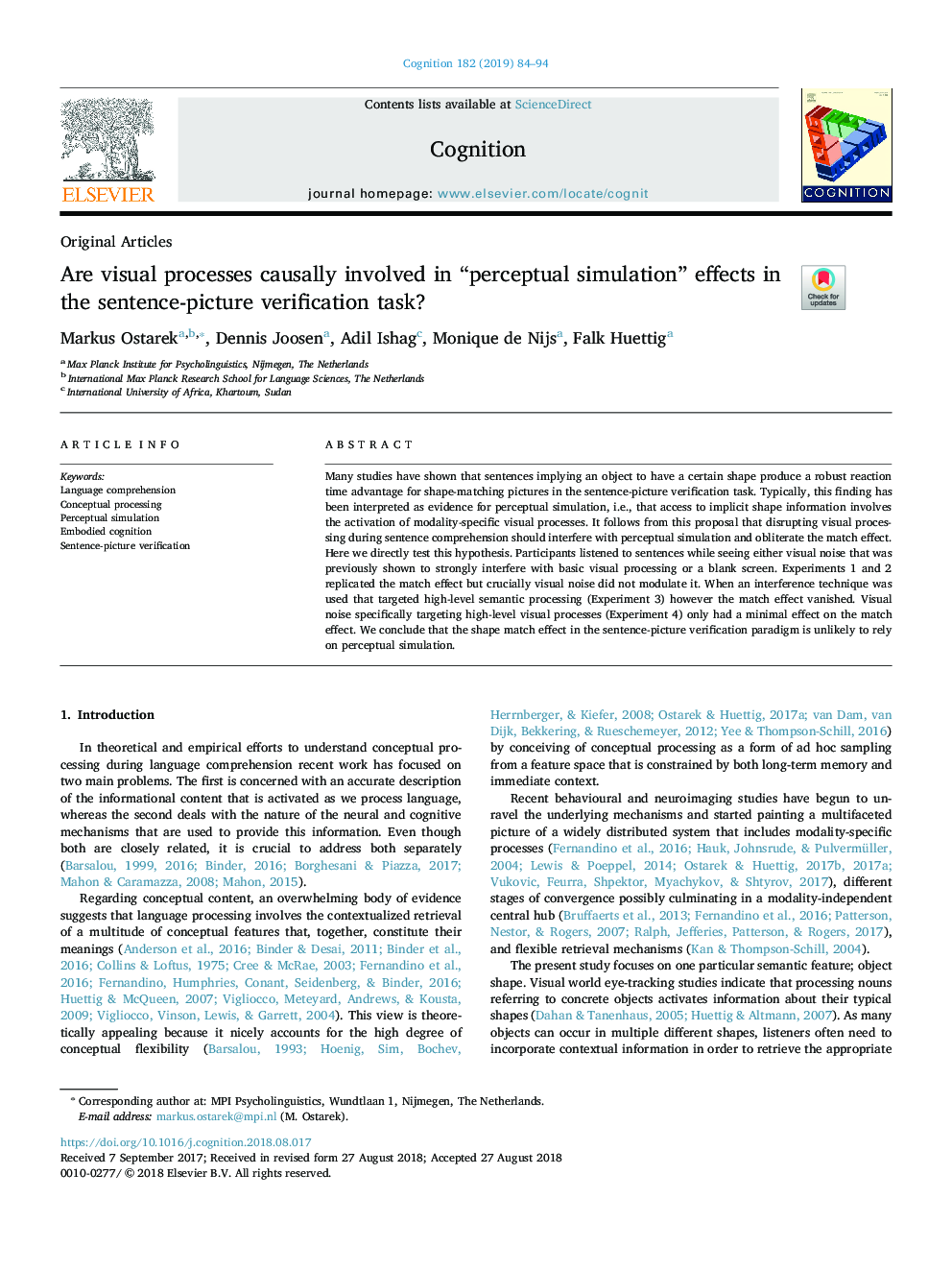| Article ID | Journal | Published Year | Pages | File Type |
|---|---|---|---|---|
| 10147048 | Cognition | 2019 | 11 Pages |
Abstract
Many studies have shown that sentences implying an object to have a certain shape produce a robust reaction time advantage for shape-matching pictures in the sentence-picture verification task. Typically, this finding has been interpreted as evidence for perceptual simulation, i.e., that access to implicit shape information involves the activation of modality-specific visual processes. It follows from this proposal that disrupting visual processing during sentence comprehension should interfere with perceptual simulation and obliterate the match effect. Here we directly test this hypothesis. Participants listened to sentences while seeing either visual noise that was previously shown to strongly interfere with basic visual processing or a blank screen. Experiments 1 and 2 replicated the match effect but crucially visual noise did not modulate it. When an interference technique was used that targeted high-level semantic processing (Experiment 3) however the match effect vanished. Visual noise specifically targeting high-level visual processes (Experiment 4) only had a minimal effect on the match effect. We conclude that the shape match effect in the sentence-picture verification paradigm is unlikely to rely on perceptual simulation.
Related Topics
Life Sciences
Neuroscience
Cognitive Neuroscience
Authors
Markus Ostarek, Dennis Joosen, Adil Ishag, Monique de Nijs, Falk Huettig,
